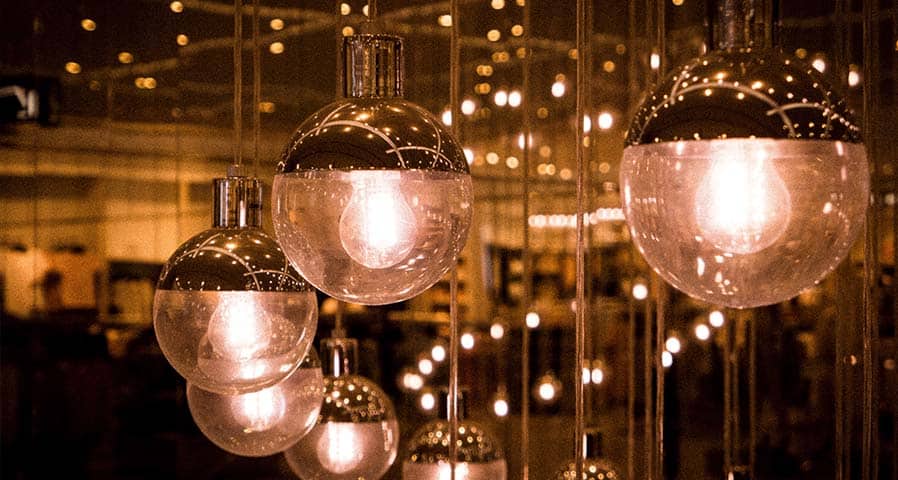Even knowing the health benefits of natural light, the average American is still spending around 90% of their time inside.
Humans have evolved to follow the natural light cycle. Before global industrialization, people worked with the daily light cycle. They followed the way sunlight’s intensity changes from morning to night. The changes in sunlight signal your body to behave in a specific way. For example, waking up in the morning and sleeping at night.
Since it’s impossible to move offices outside for employees to soak up healthy natural light, HCL (human centric lighting) is being installed in buildings. Indoor HCL lighting mimics the natural light cycle to better support your circadian rhythm. It encourages productivity during the day and restfulness at night, potentially improving your quality of life.
While scientists are still studying HCL and its impact on humans, it helps if you know a little more about the technology. We’ll take a look at human centric lighting, and how the IoT (Internet of Things) and smart technology can bring HCL into your building.
What is Human Centric Lighting?
HCL or circadian lighting is a lighting system designed to promote your health and well-being. The lighting focuses on boosting mood and productivity, along with improving comfort. HCL uses tunable LED (light-emitting diode) fixtures to simulate sunlight. The fixtures are easily adjustable and have multiple correlated color temperatures (CCTs).
For more information on tunable LED lighting, read our blog, What is Color Tuning Lighting? We cover the different types of tunable LEDs, the different lighting control systems, and strategies for a more human centric lighting solutions.
What is Correlated Color Temperature?
Correlated color temperature (CCT) is the term used to describe how yellow or blue light appears from a white LED fixture. Developed by William Kelvin, in 1848, it’s the basis for the Kelvin color temperature scale. CCT is noted in Kelvin (K) temperature units.
Yellow and orange-hued light measures from 2,000 K to 3,000 K. Bluish-white light has a Kelvin rating ranging around 7,000K and higher. In nature, a 2,300 K light mimics the light from the setting sun. A cloudy sky may have a Kelvin rating of around 7,500 K. Lower CCTs represent early morning light, while higher ratings are similar to the afternoon sun.
What is Your Circadian Rhythm?
Circadian rhythms are physical, mental, and behavioral changes that follow a daily pattern. The amount of light in the environment is primarily responsible for triggering the changes. An example is sleeping at night and being awake during the day. Almost all living creatures, including plants, have a circadian rhythm that follows an estimated 24-hour cycle.
Biological clocks and circadian rhythms are similar but also have differences. Your biological clock creates your circadian rhythm. Think of your biological clock as an innate timer.
The master clock in your brain controls your biological clock. The master clock is comprised of nerve cells in your hypothalamus. The cells form a structure that receives information from your eyes. When the light is dim, the master clock signals the body to produce melatonin to encourage sleep. Brighter light reduces melatonin production, so you feel more awake and energized.
The Health Benefits of Using Human-Centric Lighting
Since human centric lighting mimics natural light, HCL may be able to restore an individual’s natural sleep cycle. However, more research is necessary before this claim is considered a fact. Even though research is ongoing, HCL can still provide benefits. Let’s take a look at some of the advantages you get with proper lighting.
1. Boost Productivity
Incorporating HCL in your lighting system can help boost productivity by energizing the workspace. This, in turn, benefits your business and employees’ overall well-being.
A few studies that indicate HCL can improve productivity levels include the following.
- Improves sleep and boosts mental health. The Journal of Clinical Sleep Medicine compared the effects of working in an area with plenty of daylight to a windowless room. Individuals in the area with daylight reported sleeping longer than those in a windowless room. They also scored higher on a self-reported vitality and mental health survey.
- Boosts cognitive performance. A 2019 Tanzanian study on the effects of poor lighting on office workers finds employees in poorly lit workspaces report a higher number of headaches, neckaches, and back pain, resulting in decreased productivity. A 2015 study supports the decrease in productivity due to bad lighting. It can also leave employees feeling dissatisfied with their work environment.
- Increase alertness. A 2017 study comparing the effects of artificial light in 29 subjects to natural light finds those exposed to brighter afternoon light are more alert and accurate than those using artificial light. Since HCL resembles natural light, it may be able to produce the same positive results.
You may also want to consider using cool lighting for computer-related tasks. A 2018 published study notes exposure to cooler color temperatures significantly increases alertness. Participants in the study can type faster with fewer mistakes in an environment with cool lighting, compared to an area using warmer colored light. Some researchers feel the light measuring around 6,500K is best suited for typing and other office-related tasks.
The Lighting Research Center (LCR) conducted a study to demonstrate the effectiveness of using HCLs in the office. The circadian-effective lighting helped reduce sleepiness at work, leaving study participants feeling more energetic and alert.
2. Improve Sleep
Your sleep improves when you follow the pattern of natural sunlight. Your body produces melatonin at the correct time. Did you know the blue light emitted from your phone can disrupt sleep patterns when you use it late at night?
A prolonged loss of quality sleep can lead to health issues, including some serious conditions like cancer or heart disease.
While blue-colored light inhibits melatonin production, the effect is the opposite with yellowish light. The following studies indicate how light exposure can positively or negatively affect your sleep.
- Sleep quality improves with exposure to daytime light. Sleep Health published a study examining how circadian-effective light impacts employees’ mode and quality of sleep. Employees exposed to high levels of morning light are more alert and fall asleep faster at night. Morning light resets your circadian rhythm, so you wake up at the start of your day and easily fall asleep at night.
- Brighter light suppresses melatonin production in children. In 2018, a study finds exposure to bright light reduced melatonin production in children. They also learned it can take an hour or longer for melatonin production to return to normal. HCL not only benefits employees, but it also has at-home applications.
- Improve alertness with blue light. The LRC exposed study participants to different levels of blue light at night. Researchers measured participants’ alertness and discovered a potential link between exposure to blue light and melatonin production. The study states the circadian system is instrumental in nocturnal alertness.
- Our sleep is controlled by light. The LRC performed a study, asking participants to set their alarms 90 minutes earlier than their usual wake-up time. One group was exposed to bright light, while the other experienced dimmer light. The study results are not surprising. The group receiving bright light felt more alert and found it easier to fall asleep.
Exposure to bright light at night can disrupt sleep quality. However, bright light in the morning can increase alertness and make it easier to sleep at night.
3. Improve Your Mood
Improving your sleep and boosting productivity can also have a positive effect on your mood. It may be particularly true for individuals diagnosed with seasonal affective disorder (SAD). It’s estimated that half a million Americans experience some or all of the symptoms associated with SAD in the winter. These symptoms can also appear in the summer, and the condition occurs more frequently in women.
The precise cause of SAD is unknown, but some researchers believe it is tied to the lack of sunlight individuals receive in the winter. The lack of sunlight can increase melatonin production during the day, leaving you feeling tired by the afternoon. Low exposure to sunlight can also decrease serotonin levels in the brain, potentially leading to feelings of depression or triggering SAD symptoms.
Individuals with SAD typically sleep more during the day. They may also experience feelings of sadness, anxiety, irritability, and experience a lack of energy. Common therapies work well at combating SAD and depression, but physicians can also use light therapy in the form of HCL.
Light boxes are used to mimic sunlight and alleviate SAD symptoms. It’s best to get this form of therapy in the morning since it uses a brighter light.
Benefits of Combining Human Centric Lighting with Lighting Controls
Imagine working in an office space with lighting that mimics the sun’s natural path throughout the day. The lights start bright, gradually dimming as the light goes from energizing blue to calming amber. When you leave the office at the end of the day, you notice your indoor lighting matches the light outside. It leaves you feeling calm and ready to relax after a busy workday.
Being able to customize your lighting is possible thanks to the lighting control systems and human centric lighting (HCL).
Lighting controls make it possible to control lighting fixtures using an app or connected device. The device communicates with connected LED fixtures to adjust the light’s color and intensity.
Some examples of using connected LED lights include having a bright light in the morning to energize you for the day ahead. In the evening, the light can gradually fade, encouraging you to slow down and relax.
The lighting can be preprogrammed to follow a set schedule. It can also be synchronized with nature, so the indoor light matches the outside.
The flexibility, efficiency, and longevity of LED lights make the fixtures ideally suited for use with lighting controls. When you combine HCL with smart technology, you get endless options to customize the lighting to fit your needs.
Contact Us to Learn More About Installing HCL in Your Facility
HCL can increase your employees’ overall well-being and improve their satisfaction with their workspace. Contact us to learn more about using HCL in your facility or to start planning your lighting installation. Call 610-558-9773, emailing [email protected], or schedule a call that fits your needs by clicking the button below.









































0 Comments